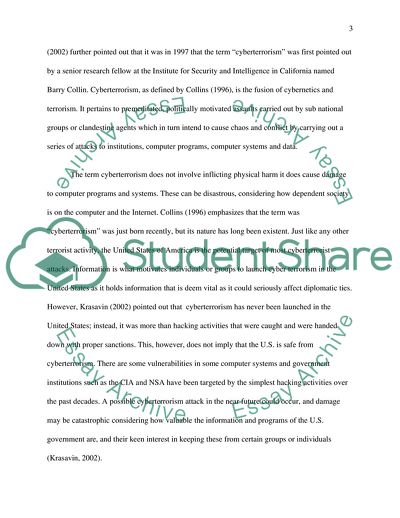Cite this document
(Cyberterrorism: What Is It Research Proposal Example | Topics and Well Written Essays - 4250 words, n.d.)
Cyberterrorism: What Is It Research Proposal Example | Topics and Well Written Essays - 4250 words. https://studentshare.org/politics/1721692-cyberterrorism-what-is-it
Cyberterrorism: What Is It Research Proposal Example | Topics and Well Written Essays - 4250 words. https://studentshare.org/politics/1721692-cyberterrorism-what-is-it
(Cyberterrorism: What Is It Research Proposal Example | Topics and Well Written Essays - 4250 Words)
Cyberterrorism: What Is It Research Proposal Example | Topics and Well Written Essays - 4250 Words. https://studentshare.org/politics/1721692-cyberterrorism-what-is-it.
Cyberterrorism: What Is It Research Proposal Example | Topics and Well Written Essays - 4250 Words. https://studentshare.org/politics/1721692-cyberterrorism-what-is-it.
“Cyberterrorism: What Is It Research Proposal Example | Topics and Well Written Essays - 4250 Words”. https://studentshare.org/politics/1721692-cyberterrorism-what-is-it.


